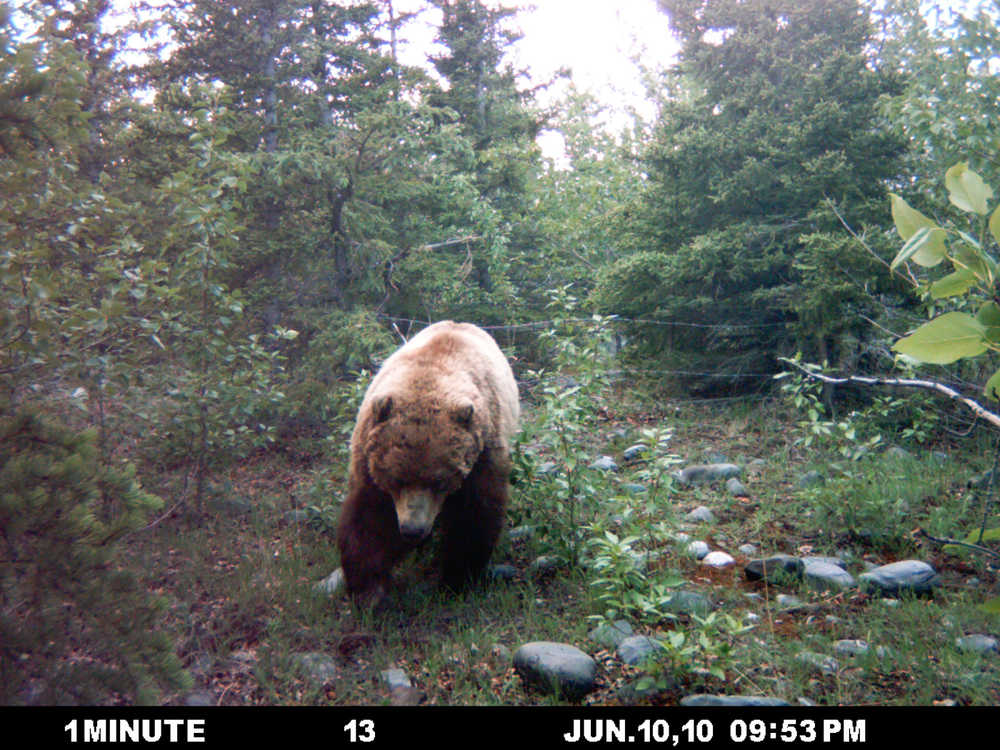Scientific research is something all of us were exposed to in school and something we hear routinely in the news. Most know that the hallmark of good science is to have findings published in a peer-reviewed science journal. But unlike the collective act of designing, conducting and analyzing data, which usually has elements of fun and excitement (especially in wildlife research), publishing can be downright punishing. From the initial submission of a manuscript to journal editors, through reviews and revisions, to having a paper reprint in hand can take one and sometimes two years. And this may be after spending years collecting data. Ouch.
So I was pleased when four articles were published recently that included Kenai National Wildlife Refuge biologists as authors. As head of the Refuge biology program, I was even more pleased by the breadth of topics: soundscape, brown bears, earthworms and climate change. It’s a kick in the pants that we have the capacity to tackle a legislative mandate as lofty as conserving fish and wildlife populations and habitats in their natural diversity.
These four articles tell us something about how science interacts with an agency entrusted with managing public lands. Spatial modeling of the winter soundscape, published in Landscape Ecology, reflects the Refuge’s continuing response to the challenges of managing 1.3 million acres of Congressionally-designated Wilderness abutting an urbanizing landscape. Estimation of the Kenai brown bear population, published in the Journal of Wildlife Management, reflects the application of new technology (DNA analysis of hairs) to solve a long-festering problem of how to count bears when you can’t see them. Documenting earthworms invading our boreal landscape, published in NeoBiota, reflects a growing awareness of a new ecological issue in Alaska (exotic and invasive species). And the almost cosmic thinking about eco-climatic teleconnections between deforestation in Alaska and drying of the Amazon rainforest, also published in Landscape Ecology, shows how new perspectives arise as science matures.
These articles also illustrate how research gets done when we have neither the expertise nor the funding to study everything that needs to be studied. The brown bear study was the result of a joint field effort by biologists from Kenai Refuge and Chugach National Forest. Two papers were the results of Refuge-supported research by graduate students — Tim Mullet who received his doctorate from the University of Alaska Fairbanks (UAF) and Deanna Saltmarsh who received her masters from Alaska Pacific University (APU). In the fourth paper, Kenai Refuge was a junior partner in a much larger collaboration of researchers from universities in Michigan, Arizona, Washington, Brazil, Columbia, and the United Kingdom.
You can find these and other publications authored by biologists at Kenai Refuge since its establishment in 1941 on our website (http://www.fws.gov/refuge/Kenai/what_we_do/science/bibliography.html). We’re still chasing down older literature, but more than 100 journal articles, theses and dissertations have already been compiled, many of which can be downloaded from this site.
Scanning down this list, you’ll see how research has changed over the years. In the 1970s and 1980s, Refuge biologists Dr. Ted Bailey and Ed Bangs conducted seminal research on moose and trumpeter swans, examining in detail their habitat use and demographics. Dr. Bailey’s 1986 article on lynx demographics helped set the current regulatory structure that adjusts allowable harvests based on the snowshoe hare population cycle. “Wolves of the Kenai Peninsula,” a monograph coauthored by Bailey in 1984, is now considered a classic read for anyone interested in wolf ecology.
In the 1990s, Refuge ecologist Dr. Ed Berg, working with graduate students Brandon Miner and Andy De Volder from APU and Northern Arizona University (NAU), studied wildfire history and its effects using tree-ring analysis of burn scars and carbon-14 dating of charcoal. I suspect we are one of the few places in the U.S. with historic fires mapped back to the 1700s. Berg wrapped up his work on fire and spruce bark beetle with two synthesis papers published in 2006.
In the 2000s, Berg began working with other APU and University of Alaska Anchorage graduate students to link recent climate warming to rising treelines, drying wetlands and closed-basin lakes, and carbon cycling in wetlands. Working with others including Dr. Dick Reger, a local geologist, and Dr. Scott Anderson at NAU, Berg helped map the glacial retreat since the Wisconsin Ice Age while examining pollen and charcoal in peat cores to show how wildfire and plant colonization interacted in past millennia to shape our Kenai landscape.
I’ve also sustained a string of graduate students over the last decade from UAF, APU, Colorado State University, University of Wisconsin and University of Delaware who probed contemporary Refuge issues: American marten colonization of the Kenai Lowlands, terrestrial arthropod diversity, managing climate change in the National Wildlife Refuge System, local perceptions of bears on the Kenai, shorebird use of Chickaloon Flats, winter soundscapes and exotic earthworms. Dr. Dawn Magness and Matt Bowser, two of those graduate students, now work at the Refuge where they ply their skills in spatial modeling and entomology.
Science ultimately provides the information for management decisions and to understand ecological processes and patterns, even while identifying new issues not yet recognized by the public or resource managers. Publishing our research in peer-reviewed journals is one rigorous measure of our success in providing that information. But our goal is also to disseminate that information to non-scientists and so we write reports (aka “gray literature”), publish brochures such as the bird checklist for the Kenai Peninsula, give presentations both locally and at national conferences, and write Refuge Notebooks such as this one. My hope, through greater understanding, is that we more fully appreciate what a wonderfully complex natural world lies within the boundaries of Kenai National Wildlife Refuge.
Dr. John Morton is the supervisory biologist at Kenai National Wildlife Refuge. Find more information at http://kenai.fws.gov or http://www.facebook.com/kenainationalwildliferefuge.

